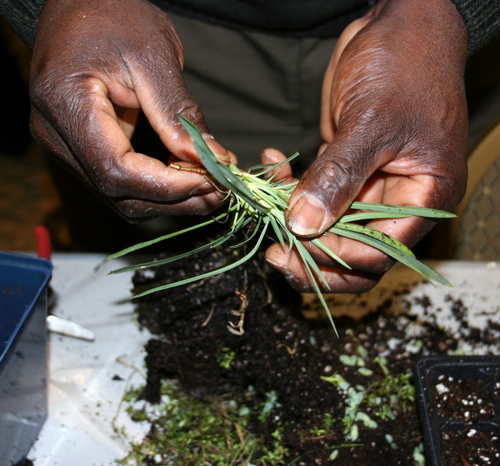When I first moved into my current home 15 years ago, the farm house in the pasture was completely void of any landscaping. I instantly fell in love with the rural paradise, but I had my work cut out to get the vacant landscape looking good.
Having spent most of the budget on the 40 acres and house, there was not much left for the landscape. I decided that if I couldn’t afford an instant landscape, I would be patient and grow my own plants through propagation.
Propagation can be a wonderful way to acquire new plants at a fraction of the cost of container-grown shrubs.
With the small amount of money I had left from the home purchase, I invested in materials to build a small greenhouse. I put together a 12' x 12' structure to house my propagated seeds and cuttings. The addition of a crude misting system, ventilation and heating has allowed me to produce 80 percent of my landscape. While my mini-greenhouse has been helpful, you don’t necessarily need one to propagate your own plants.
There are many forms of plant duplication including seeding, dividing, layering, grafting and taking cuttings. Taking cuttings can be one of the easiest ways to propagate new shrubs.
While many plants can be successfully propagated through cuttings, some may be difficult or impossible to reproduce through this method. Pine species, cedar, redbud, gingko, laurels, Southern magnolia, dogwood and most common shade trees such as oak, elm, pecan and hickory can be a real challenge to grow from cuttings.
Taking cuttings
Cuttings collected in early summer are called softwood cuttings. Those collected in winter are called hardwood cuttings. Softwood cuttings are taken from the current season’s new growth. Select softwood cuttings in June, July and August.
Take cuttings from healthy, disease-free shoots near the top of the plant. The trick is to find new wood that has not fully matured, yet is not too tender. Cuttings should be 4 to 6 inches long. Make a smooth slanting cut with a sharp knife. Cuttings will be inserted 1 to 2 inches deep in the rooting medium, so remove the leaves on the lower half of the stem. Be sure to leave 50 percent of the leaves at the top to manufacture food for the cutting.
Dormant or hardwood cuttings are collected the same way, but the cuttings are taken during the winter months. First-time propagators will likely have more success with softwood cuttings.
Almost all cuttings respond better when dipped in artificial rooting hormones, which are available at most nurseries as powders, liquids or gels. These hormones will encourage successful rooting.
Rooting media
Cuttings are only as good as the soil they have to grow in. Start with a good, sterile medium. A general mix would be half peat moss and half perlite. Ground pine bark is also excellent when mixed with equal parts of perlite. Some folks have had success growing cuttings in pure vermiculite, a soil-less medium that absorbs water yet provides good aeration due to its particle size.
Do not use garden soil as a propagation medium. It is too heavy and can contain diseases.
Cutting care
The most common cause of failure in cutting propagation is uneven moisture. Never allow the propagation medium to dry out or become waterlogged. Keep relatively high humidity around the leaves at all times.
Commercially-made mini-greenhouses are available, or you can make one yourself with wire and plastic to create a humid environment. These structures can range in size from a few feet to something as large as a dog house or bigger. A frame built of wood and plastic can also protect rooted plants in winter.
Cuttings housed under plastic need water only once a week. Don't add any kind of fertilizer to the medium until the cuttings have rooted.
After the cuttings have produced a root system 1 inch long, transplant them into a soil mixture in individual pots. Most cuttings form adequate root systems in one to three months. A good soil mixture for potted plants is one-third peat moss, one-third sand and one-third top soil.
Use a slow-release fertilizer in container plants and closely monitor water needs. Plants may need to root-out in containers for up to two years before being ready to transplant in the landscape. Some vigorous-growing plants may be ready to plant after one season in the container.
While it takes time and effort, it can be satisfying to grow your own landscape. The possibilities are endless and the money you save can help you purchase better propagating structures. Once you get the hang of propagation, it will be hard to walk past plants in other landscapes without sneaking a cutting into your pocket.









